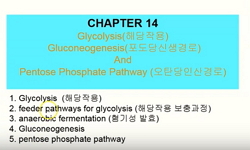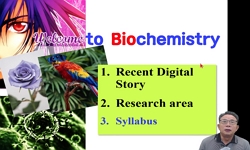Dietary capsaicin exhibits anti-steatosis activity in obese mice. High-fat diet (HFD)-induced mice is a highly studied approach to develop non-alcoholic fatty liver disease (NAFLD). In this study, we determined whether the topical application of capsa...
http://chineseinput.net/에서 pinyin(병음)방식으로 중국어를 변환할 수 있습니다.
변환된 중국어를 복사하여 사용하시면 됩니다.
- 中文 을 입력하시려면 zhongwen을 입력하시고 space를누르시면됩니다.
- 北京 을 입력하시려면 beijing을 입력하시고 space를 누르시면 됩니다.
https://www.riss.kr/link?id=A107004332
- 저자
- 발행기관
- 학술지명
- 권호사항
-
발행연도
2020
-
작성언어
English
- 주제어
-
등재정보
KCI등재,SCOPUS,SCIE
-
자료형태
학술저널
-
수록면
214-219(6쪽)
-
KCI 피인용횟수
0
- DOI식별코드
- 제공처
-
0
상세조회 -
0
다운로드
부가정보
다국어 초록 (Multilingual Abstract)
Dietary capsaicin exhibits anti-steatosis activity in obese mice. High-fat diet (HFD)-induced mice is a highly studied approach to develop non-alcoholic fatty liver disease (NAFLD). In this study, we determined whether the topical application of capsaicin can improve lesions of NAFLD. The HFDinduced mice were treated with daily topical application of capsaicin for 8 weeks. Topical application of capsaicin reduced liver fat in HFD-fed mice. Capsaicin stimulated carnitine palmitoyl transferase (CPT)-1 and CD36 expression, which are associated with β-oxidation and fatty acids influx of liver while it decreased the expression of key enzymes involved in the synthesis of fatty acids, such as acetyl Co-A carboxylase (ACC) and fatty acid synthase (FAS).
Immunohistochemical analysis revealed the elevated level of adiponectin in liver tissue of the capsaicin-treated mice. These results suggest that the topical application of capsaicin suppresses liver fat accumulation through the upregulation of β-oxidation and de novo lipogenesis in HFDinduced NAFLD mice.
참고문헌 (Reference)
1 Finelli C, "What is the role of adiponectin in obesity related non-alcoholic fatty liver disease?" 19 (19): 802-812, 2013
2 Lee GR, "Topical application of capsaicin reduces visceral adipose fat by affecting adipokine levels in high-fat diet-induced obese mice" 21 (21): 115-122, 2013
3 Polyzos SA, "The role of adiponectin in the pathogenesis and treatment of non-alcoholic fatty liver disease" 12 (12): 365-383, 2010
4 Hardie DG, "The AMP-activated protein kinase pathway–new players upstream and downstream" 117 (117): 5479-5487, 2004
5 Donnelly KL, "Sources of fatty acids stored in liver and secreted via lipoproteins in patients with nonalcoholic fatty liver disease" 115 (115): 1343-1351, 2005
6 Softic S, "Role of dietary fructose and hepatic de novo lipogenesis in fatty liver disease" 61 (61): 1282-1293, 2016
7 Kessoku T, "Resveratrol ameliorates fibrosis and inflammation in a mouse model of nonalcoholic steatohepatitis" 6 : 22251-, 2016
8 Machado MV, "Non-alcoholic fatty liver disease : what the clinician needs to know" 20 (20): 12956-12980, 2014
9 Iwaki M, "Induction of adiponectin, a fat-derived antidiabetic and antiatherogenic factor, by nuclear receptors" 52 (52): 1655-1663, 2003
10 Hamaguchi M, "Identification of individuals with non-alcoholic fatty liver disease by the diagnostic criteria for the metabolic syndrome" 18 (18): 1508-1516, 2012
1 Finelli C, "What is the role of adiponectin in obesity related non-alcoholic fatty liver disease?" 19 (19): 802-812, 2013
2 Lee GR, "Topical application of capsaicin reduces visceral adipose fat by affecting adipokine levels in high-fat diet-induced obese mice" 21 (21): 115-122, 2013
3 Polyzos SA, "The role of adiponectin in the pathogenesis and treatment of non-alcoholic fatty liver disease" 12 (12): 365-383, 2010
4 Hardie DG, "The AMP-activated protein kinase pathway–new players upstream and downstream" 117 (117): 5479-5487, 2004
5 Donnelly KL, "Sources of fatty acids stored in liver and secreted via lipoproteins in patients with nonalcoholic fatty liver disease" 115 (115): 1343-1351, 2005
6 Softic S, "Role of dietary fructose and hepatic de novo lipogenesis in fatty liver disease" 61 (61): 1282-1293, 2016
7 Kessoku T, "Resveratrol ameliorates fibrosis and inflammation in a mouse model of nonalcoholic steatohepatitis" 6 : 22251-, 2016
8 Machado MV, "Non-alcoholic fatty liver disease : what the clinician needs to know" 20 (20): 12956-12980, 2014
9 Iwaki M, "Induction of adiponectin, a fat-derived antidiabetic and antiatherogenic factor, by nuclear receptors" 52 (52): 1655-1663, 2003
10 Hamaguchi M, "Identification of individuals with non-alcoholic fatty liver disease by the diagnostic criteria for the metabolic syndrome" 18 (18): 1508-1516, 2012
11 Miao X, "High expression of vanilloid receptor-1 is associated with better prognosis of patients with hepatocellular carcinoma" 186 : 25-32, 2008
12 Yamauchi T, "Globular adiponectin protected ob/ob mice from diabetes and ApoE-deficient mice from atherosclerosis" 78 (78): 2461-2468, 2003
13 Medina-Contreras JML, "Effects of topical capsaicin combined with moderate exercise on insulin resistance, body weight and oxidative stress in hypoestrogenic obese rats" 41 : 750-758, 2017
14 Sharabi Y, "Effect of PPAR-gamma agonist on adiponectin levels in the metabolic syndrome : lessons from the high fructose fed rat model" 20 (20): 206-210, 2007
15 Asai A, "Dissociation of hepatic insulin resistance from susceptibility of nonalcoholic fatty liver disease induced by a high-fat and high-carbohydrate diet in mice" 306 (306): G496-G504, 2014
16 Li Q, "Dietary capsaicin prevents nonalcoholic fatty liver disease through transient receptor potential vanilloid 1-mediated peroxisome proliferator-activated receptor delta activation" 465 (465): 1303-1316, 2013
17 Hu J, "Dietary capsaicin and antibiotics act synergistically to reduce non-alcoholic fatty liver disease induced by high fat diet in mice" 8 (8): 38161-38175, 2017
18 Ji-Hye Kang, "Dietary Capsaicin Attenuates Metabolic Dysregulation in Genetically Obese Diabetic Mice" 한국식품영양과학회 14 (14): 310-315, 2011
19 Panchal S, "Capsaicin in metabolic syndrome" 10 (10): 630-, 2018
20 O’Shea RS, "Alcoholic liver disease" 51 (51): 307-328, 2010
21 Buechler C, "Adiponectin, a key adipokine in obesity related liver diseases" 17 (17): 2801-2811, 2011
22 Awazawa M, "Adiponectin suppresses hepatic SREBP1c expression in an AdipoR1/LKB1/AMPK dependent pathway" 382 (382): 51-56, 2009
23 Yamauchi T, "Adiponectin stimulates glucose utilization and fatty-acid oxidation by activating AMP-activated protein kinase" 8 (8): 1288-1295, 2002
24 Kadowaki T, "Adiponectin and adiponectin receptors in insulin resistance, diabetes, and the metabolic syndrome" 116 (116): 1784-1792, 2006
25 Radin MJ, "Adipokines : a review of biological and analytical principles and an update in dogs, cats, and horses" 38 (38): 136-156, 2009
26 Chen J, "Activation of TRPV1 channel by dietary capsaicin improves visceral fat remodeling through connexin43-mediated Ca2+ influx" 14 : 22-, 2015
27 Combs TP, "A transgenic mouse with a deletion in the collagenous domain of adiponectin displays elevated circulating adiponectin and improved insulin sensitivity" 145 (145): 367-383, 2004
동일학술지(권/호) 다른 논문
-
SPRY4-IT1 promotes survival of colorectal cancer cells through regulating PDK1-mediated glycolysis
- 한국통합생물학회
- Liu Shengyuan
- 2020
- KCI등재,SCOPUS,SCIE
-
- 한국통합생물학회
- 박혜진
- 2020
- KCI등재,SCOPUS,SCIE
-
- 한국통합생물학회
- Cai Zhaowei
- 2020
- KCI등재,SCOPUS,SCIE
-
- 한국통합생물학회
- 박철
- 2020
- KCI등재,SCOPUS,SCIE
분석정보
인용정보 인용지수 설명보기
학술지 이력
| 연월일 | 이력구분 | 이력상세 | 등재구분 |
|---|---|---|---|
| 2023 | 평가예정 | 해외DB학술지평가 신청대상 (해외등재 학술지 평가) | |
| 2020-01-01 | 평가 | 등재학술지 유지 (해외등재 학술지 평가) |  |
| 2010-02-02 | 학회명변경 | 한글명 : 한국동물학회 -> 한국통합생물학회영문명 : 미등록 -> The Korean Society for Integrative Biology |  |
| 2010-01-01 | 평가 | 등재학술지 유지 (등재유지) |  |
| 2008-02-26 | 학술지명변경 | 한글명 : Integrative Biosciences -> Animal Cells and Systems외국어명 : Integrative Biosciences -> Animal Cells and Systems |  |
| 2008-01-01 | 평가 | 등재학술지 유지 (등재유지) |  |
| 2006-01-01 | 평가 | 등재학술지 유지 (등재유지) |  |
| 2005-04-15 | 학술지등록 | 한글명 : Integrative Biosciences외국어명 : Integrative Biosciences |  |
| 2004-01-01 | 평가 | 등재학술지 유지 (등재유지) |  |
| 2001-07-01 | 평가 | 등재학술지 선정 (등재후보2차) |  |
| 1999-01-01 | 평가 | 등재후보학술지 선정 (신규평가) |  |
학술지 인용정보
| 기준연도 | WOS-KCI 통합IF(2년) | KCIF(2년) | KCIF(3년) |
|---|---|---|---|
| 2016 | 0.45 | 0.24 | 0.33 |
| KCIF(4년) | KCIF(5년) | 중심성지수(3년) | 즉시성지수 |
| 0.28 | 0.26 | 0.395 | 0.04 |






 KCI
KCI






